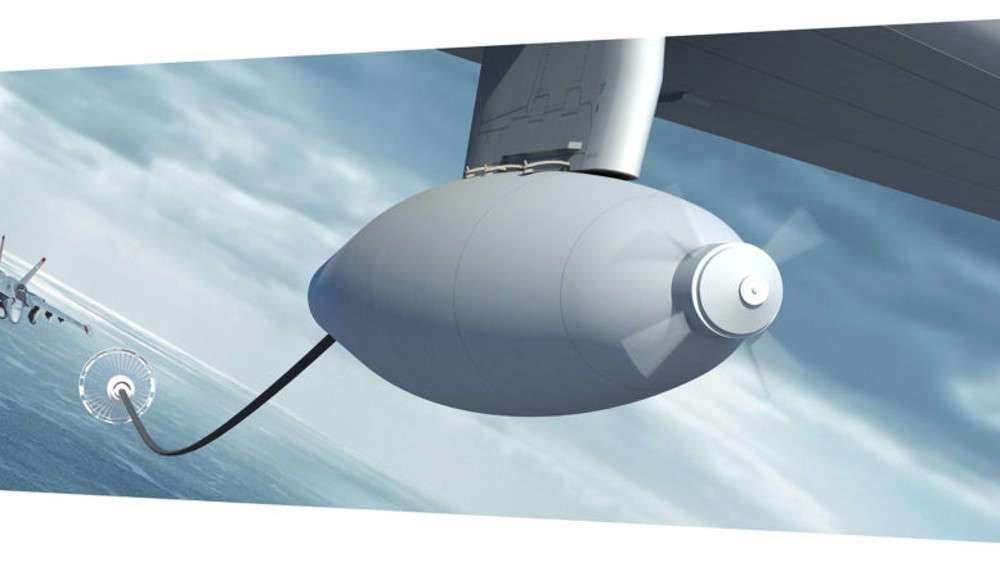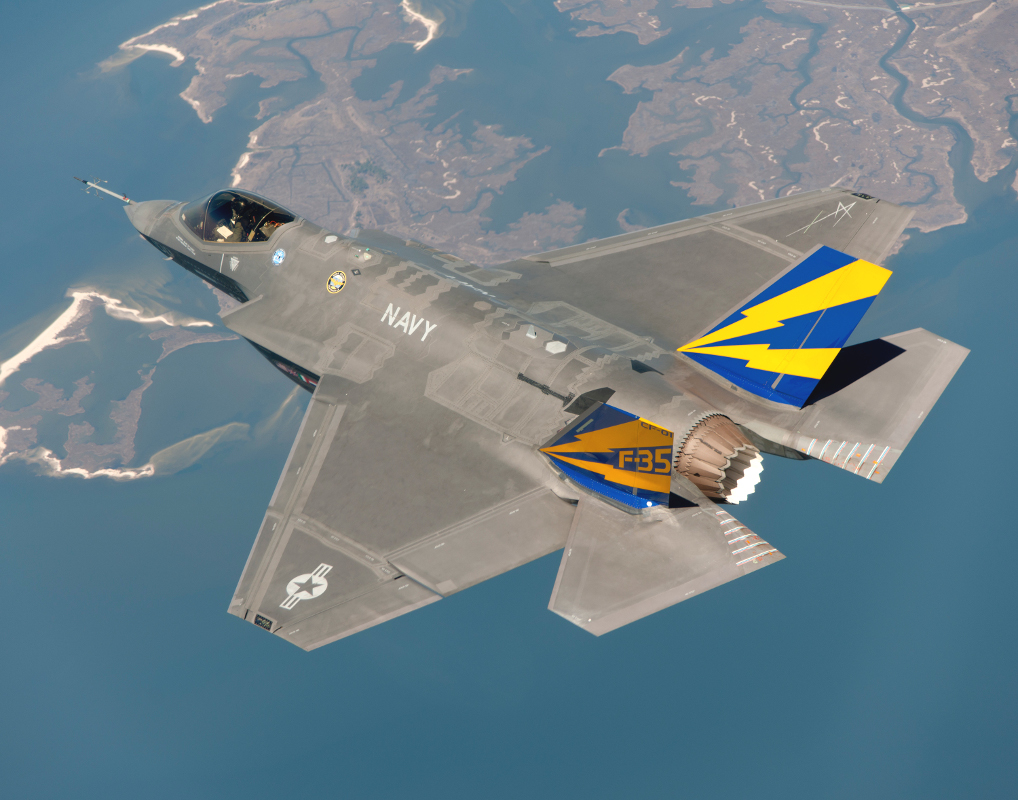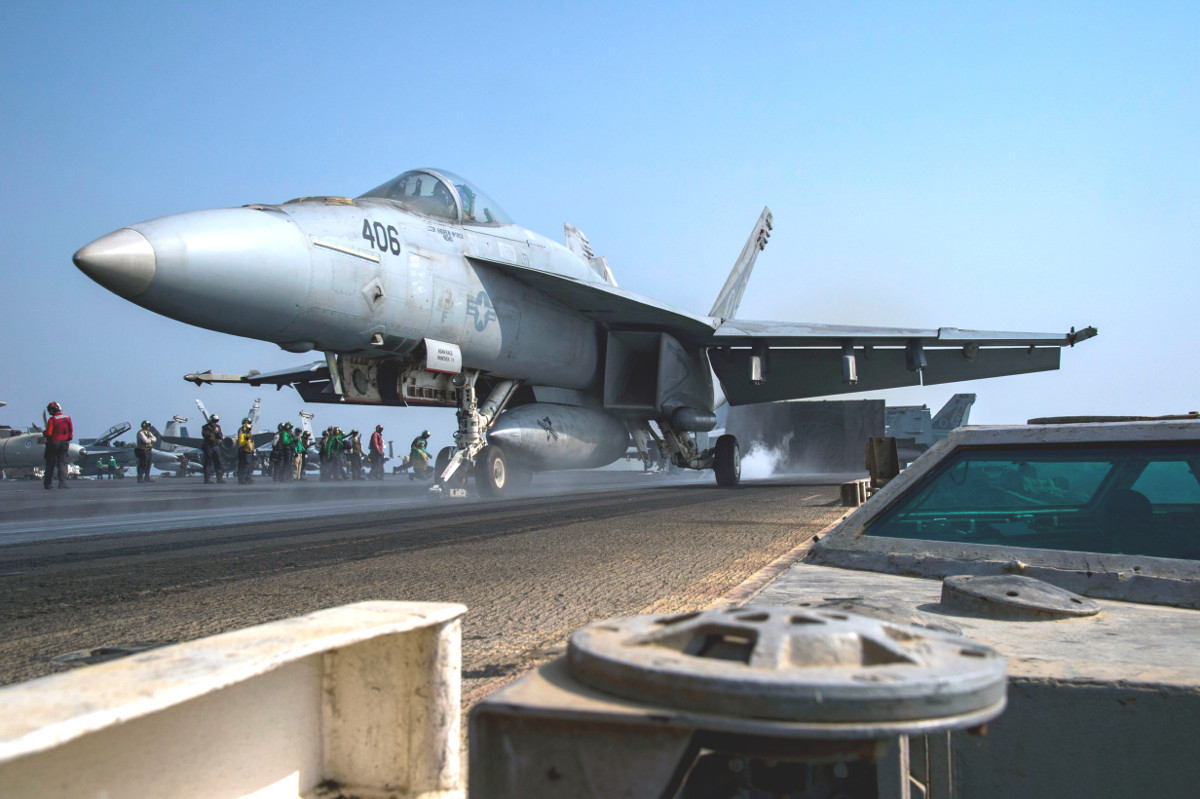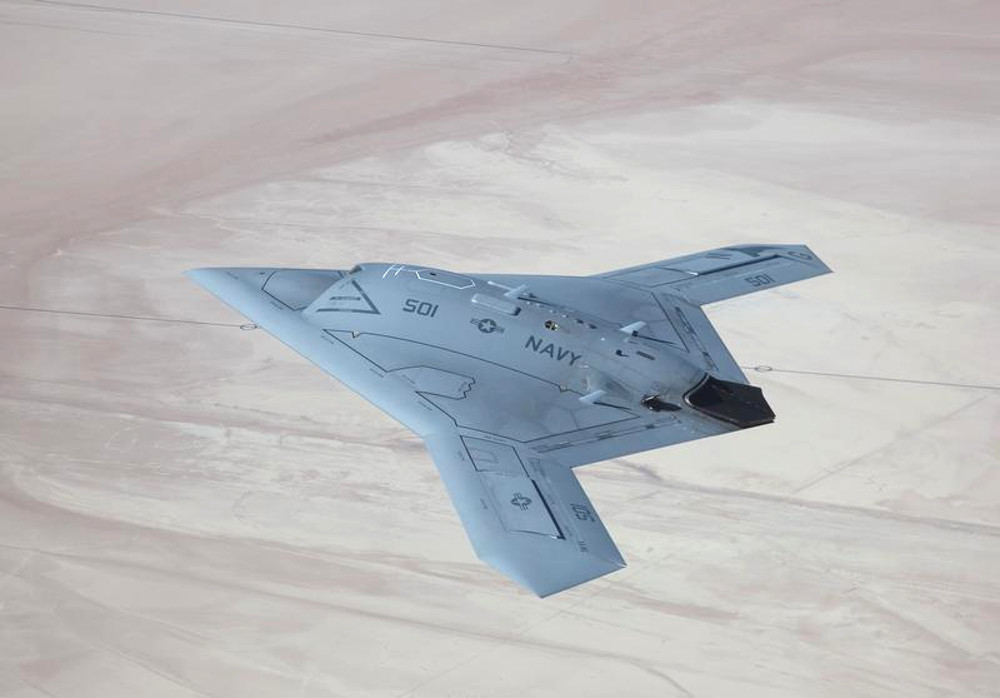The U.S. Navy says it is looking to buy as many as 72 MQ-25 Stingray tanker drones, which it plans to fly off its existing Nimitz– and future Ford-class aircraft carriers. But the service will only buy four prototypes of the winning design initially and wants the chosen contractor to then show it can meet the programs demands before handing out any larger production deals. This appears to be an attempt to avoid another “buy-before-you-try” debacle, as has happened with the F-35 Joint Strike Fighter.
Earlier in November 2017, U.S. Navy Rear Admiral Mark Darrah, the program executive officer for unmanned aviation and strike weapons at the Naval Air Systems Command (NAVAIR) detailed the plans in an interview with Aviation Week. At present, Boeing, General Atomics, and Lockheed Martin are still competing for the initial development contract. The Navy wants the three companies to submit their final proposals in January 2018 and hopes to select a single winner by the end of the summer. In October 2017, Northrop Grumman unexpectedly announced that it was withdrawing from the competition.
“We want to go as fast as we can and get them out there as quickly as we can,” Darrah told Aviation Week. “We’re incentivizing [the contractor] to do well in the engineering and manufacturing development phase.”
To do that, the Navy says it will link the winning company’s performance during that phase to whether or not it gets any subsequent production contracts. The service has made it clear it wants the contractor to prove it can not only deliver a design that meets the functional requirements for the MQ-25, but can also do so on time and within the firm, fixed budget laid out for the Stingray program.

This definitely makes a certain amount of sense. There is no shortage of examples in recent memory of major U.S. military modernization programs that have seen significant cost overruns and delays, both in development and operational testing.
The Navy itself has seen the price of its F-35C Joint Strike Fighters grow even as the timeline for their initial entry into service has continued to slip amid continued concerns about jets’ real combat capabilities and the progress of the program as a whole. Unlike the U.S. Air Force and Marine Corps, the service does not expect to declare an Initial Operational Capability, or IOC, for its F-35 variant until 2018 at the earliest.
The main issue with the F-35 program has been the process known as concurrency, whereby the U.S. military purchased significant numbers of aircraft under the premise that the larger orders would drive down production costs. The planes would then receive modifications either at depots or on the production line “concurrently” as problems emerged and got fixed during the development phase. This has turned out to have been an almost entirely flawed concept and the Air Force and Marines are now considering not upgrading many existing Joint Strike Fighters in order to try and stem ballooning costs.

On top of that, the entire stated point of the MQ-25 program is to take over aerial refueling duties from F/A-18E/F Super Hornets and their pilots. This in turn would both free up those fighter jets for combat missions and provide an opportunity to reduce the strenuous demands on the two manned aircraft. In October 2017, U.S. Navy Vice Admiral Mike Shoemaker, the service’s top aviation officer, revealed that only half its Super Hornets were even flyable at any one time and that barely more than 30 percent were combat ready.
“The readiness level for [the Super Hornet] community has been on a declining trend for the last few years,” Shoemaker told members of Congress earlier in November 2017. “We’ve been forced to take risks in maintenance and production and, as a result, our ability to fix and produce up aircraft and therefore train aviators has suffered.”
The Navy also wants the MQ-25 to enhance the Navy’s “mission tanking” capabilities in order to help extend the overall combat range of Hornets and Super Hornets. Initially, the main focus of the Stingray program was on less intensive “recovery tanking,” which takes place nearer to the carrier itself.
Per U.S. Navy documents the author previously obtained via FOIA, the full MQ-25 “system” will include four drones, a control station linked to the carrier’s existing networks, and modifications to the ships to accommodate the Stingrays and their specific equipment. The initial contract appears to cover one single package. A full fleet of 72 aircraft would cover 18 total systems, which would allow the service to assign one to each of its nine carrier air wings, while holding additional packages in reserve in case of a maintenance issue, the need to deploy additional groups during a crisis, and for training and testing purposes.

As such, slips in the MQ-25’s schedule could delay a key part of the Navy’s plan to mitigate the worrisome and potentially dangerous situation within its Hornet and Super Hornet communities. The service has already made it clear it is interested in proposals that make heavy use of mature technologies and commercially available systems and has insisted that any potential Stingray design use its existing Cobham “buddy store” refueling pods in order to speed up work on the Stingray.
But at the same time, there’s no clear indication of what would happen if contractor doesn’t deliver during the engineering and development phase. Rerunning the competition, or canceling the program outright and starting over, could only cause significant delays in getting the desired capability to carrier air wings.
And though the prospect of production contracts for dozens of drones would definitely be attractive to any contractor, the Navy’s present plan requires companies to invest a significant amount up front without a guarantee of a future deal. This could help explain why Northrop Grumman decided to opt out of the project and likely refocus its efforts elsewhere, such as its B-21 Raider stealth bomber or other top secret projects. The company will almost undoubtedly reap some benefits of having been involved in the project to begin with and is still getting paid for work on its proposal under an earlier set of risk reduction contracts that each of the four competitors received, which run through March 2018.
It’s also unclear whether or not the Navy may decide, yet again, to change its requirements for the MQ-25 at some point in the future. We at The War Zone explored the saga of the Stingray’s shifting mission set, which has morphing from a stealthy penetrating strike and reconnaissance platform to a non-stealthy tanker, in detail many times, some of which you can find here, here, and here. Between 2011 and 2015, the service was actively working on the assumption that it would add an unmanned combat air vehicle (UCAV) to the carrier air wing, before changing course and dropping this requirement entirely.

In his interview with Aviation Week, Rear Admiral Darrah confirmed previous reports that the present requirements call for the drones to have a sensor turret with electro-optical and infrared cameras and provisions for an unspecified surface search radar. When asked about whether the unmanned aircraft would ever carry weapons, the officer said that the tankers would not, but that future designs might have an armed capability.
It is entirely possible that the Navy could trim the overall size of the MQ-25 fleet if it decides to reverse its present course and pursue UCAVs for a second time. Budget cuts and other changing priorities are always a factor, as well. Once again, this means that the winning contractor not only has to put up significant resources without the assurance of production deals to offset those costs, but that they have to do so knowing for sure if the Navy will follow through with a full 72 aircraft purchase order.
It’s worth noting that, so far, only General Atomics has released concept art showing its full proposal, which it derived from its existing Sea Avenger concept. Boeing and Lockheed Martin have only shown more cryptic promotional material focusing almost entirely on the Cobham pod. It is possible that one or both firms could decide to follow Northrop Grumman’s lead and shift resources to other major military contracts and opportunities. At present, Boeing is still struggling to deliver the first KC-46A tankers to the Air Force and Lockheed Martin remains heavily invested in the F-35 program, which could expand soon to include additional foreign buyers, such as Germany, Saudi Arabia, and the United Arab Emirates.
“We’re going to move forward with our strategy,” Rear Admiral Darrah insisted to Aviation Week. “[We] feel we’re in a good position with whoever remains behind to give us a proposal.”
With the deadline fast approaching for the final MQ-25 submissions, the Navy won’t have to wait much longer to see whether or not its plan has paid off and offered an actual an incentive to the prospective contractors.
Contact the author: joe@thedrive.com
